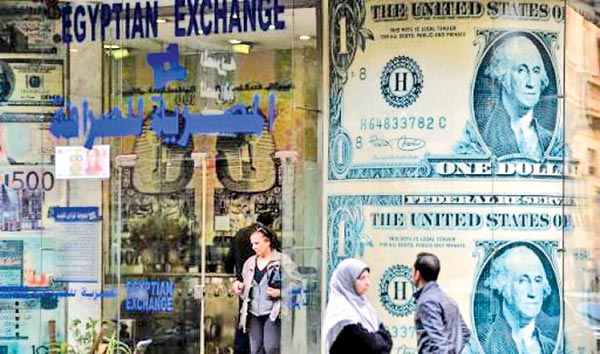Egypt Devaluation: The Inevitable Finally Happens

Though no one was outwardly surprised by Egypt’s shift last week to a flexible exchange-rate regime – ~16.75/USD this morning from an 8.88 peg, the central bank had maintained since March (following a 13% devaluation, at the time the largest slide since 2003) – the EGX30 has nevertheless added nearly 15% since Thursday as punters priced in a CBE paradigm shift that effectively unwound tightened monetary effects that dollar pegging wrought since the end of the Fed’s QE roughly two years ago. (Though pound appreciation against a basket of currencies began up to a year earlier).
For a country whose BoP is defacto dependent on private remittances and external (GCC and IMF) largesse (the former, namely Saudi Arabia, has hitherto buttressed FDI, while the latter is now expected to extend a roughly $12bn loan given both the devaluation and a corresponding 47% rise in fuel prices) “free currency” is seen by pundits as a welcome first step to help the import-dependent nation become more dynamic against a backdrop of ever-dithering trade and tourism (two primary pillars of hard currency).
Since 2010, Egypt’s FX reserves have roughly halved from a peak of ~$35bn (around half a year’s worth of import cover). Interim “capital controls” such as deposit caps only supported black market premiums which importers increasingly bid to maintain production at capacity but which in turn further depressed the amount of remittances finding their way through official channels (~10% per former CBE Governor Hisham Ramez).
What’s next then for Egypt’s economy? Though devaluation and already in-place tariffs (note some tariffs are to be cancelled) certainly favor domestic over foreign goods, short term inflationary effects—especially food prices—shouldn’t be dismissed (Arqaam Capital eyes ~18-20% by year-end, a peak of ~22-24% next year vs 14.1% in September) and will likely require at least short-term targeted subsidies (especially since certain industries—such as retail—will feel the brunt of shrinking imports (although commentators point out that ~90% of imported consumer goods were being hitherto purchased at black market rates).
As EFG Hermes, an investment bank, mentioned in its research note to clients over the weekend, the accompanying 300bps increase in interest rates will drive system liquidity and incentivize carry trade investors, but also theoretically raise borrowing costs. That said, it noted, companies as a whole are not highly leveraged and the supply side related inflationary forces are, at the margin, more one-off than secular given weak domestic demand. Banks remain cheap, for instance (<1x p/b), given resilient corporate loan books, declining NPL ratios YTD and high capital adequacy ratios which should help assuage fears that CBE regulations to increase bank lending to the SME sector over the next four years by ~$25bn USD (roughly a quarter of total sector loans) could impinge on asset quality.
Small cap banks in particular remain a solid bet on Egypt’s newfound top-down, bottom up economic vision, especially given recent CBE instruction regarding reclassification of bond holdings. Otherwise, export-focused firms and/or those with inventory cover and pricing flexibility (Heremes cites Eastern Tobacco, specifically) should prove solid, asymmetric ways to add Egyptian exposure.



